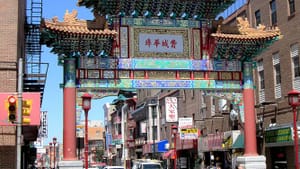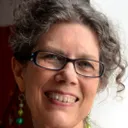Stay in the Loop
BSR publishes on a weekly schedule, with an email newsletter every Wednesday and Thursday morning. There’s no paywall, and subscribing is always free.
Telling neighborhood stories
Documentaries about gentrification

If you’ve lived in Philadelphia for a while, as I have, you’ve witnessed the phenomenon of neighborhood change: residents replaced by a new population or displaced to make room for new housing or a non-residential project. New buildings are constructed, old buildings are renovated, and public space is repurposed.
Because cities are dynamic, with competing interests, change takes place in cycles. Over time, a single block can go from lower income to higher income population and vice versa; from uniform housing stock to a mix of styles to all new; from residential to industrial to residential; and on and on. Change at the neighborhood level is the result of complex forces including financial investment, demographic trends, new cultural projects, expanding institutions, and government programs.
“Gentrification” is the catchall for this reorganization process, but I believe the term best describes just the most visible and disturbing face of urban change: the expulsion of lower income residents from a neighborhood, replaced by a new, more affluent, group. That’s the image that has captured public imagination and indignation, and media attention, at a time of increasing income inequality.
Tackling the problem
Some city governments, including Philadelphia’s, are responding to gentrification with programs to help preserve affected neighborhoods, such as relief from increased property taxes for long-time homeowners. Philadelphia was cited in a recent New York Times article, “Cities Mobilize to Help Those Threatened by Gentrification,” for having “the most comprehensive measures” to protect those homeowners.
Assuring affordable housing for low-income renters requires other measures, as noted in “Gentrifying Into the Shelters,” another Times article: Rising home prices pit renters against one another in a spiraling competition for the limited remaining units. Philadelphia City Council recently announced a proposal to build 1,000 affordable rental units to augment existing expansion plans by the Philadelphia Housing Authority; the project is subject to debate and review by Mayor Nutter and city agencies.
And documenting the problem
There are a number of documentary films about gentrification, each focusing on a specific neighborhood: Gut Renovation (2012), We Will Not Be Moved (1980), and Third Ward TX (2007) are particularly engaging and compelling stories. Told in different styles and different places, they identify common elements in the gentrification process. Foremost are the roles of real estate speculation and private housing project development, often with tax abatement deals from the city, as well as city policies, programs, and practices that often support development through partnerships with the developers, selective code enforcement, and the use of eminent domain. These films also provide lessons learned for communities facing change.
Other films look at urban change affecting lower-income neighborhoods in a broader sense. The projects described below highlight the role of community organizations and strongly advocate for a collaborative approach to negotiating urban change, probing the fundamental question of who gets to decide what happens to a neighborhood as the city strives for economic viability.
In Philadelphia . . .
Scribe Video Center’s Precious Places, about neighborhoods in the Delaware Valley, is an oral history project documenting public spaces that in some way have anchored a neighborhood or community. Over the past decade, Scribe has provided technical support in video production to nearly 70 organizations for short films told in the voices of community residents. The series has been broadcast on WHYY and screened in film festivals and community settings.
A number of Precious Places films focus on the impending loss of community. The following two illustrate the complexity of forces brought to bear on low-income and minority neighborhoods.
La Mott Community Garden (2011) is located in Cheltenham township adjacent to La Mott, the oldest historically black community in the state. Almost two acres, the garden has operated for more than 80 years, part of a property deeded to Temple University in 1939 along with a parcel of 12 acres, for one dollar. Temple built Tyler School of Art on the 12-acre plot, leaving the garden intact, but when Tyler moved to Temple’s main campus in 2009, all the land went up for sale. The La Mott Community Garden Group is attempting to save the garden. With support from the township and Conservancy of Montgomery County, they have requested that Temple donate the garden to the community under a land trust agreement or set a fair market price so it can be purchased by the community. Both options have been rejected by Temple, and negotiations are at a standstill as the gardening season approaches. The film describes the community’s strategies in the voices of the 60 gardeners and other residents.
I Come From A Place (2007) captures the Asian Arts Initiative staff’s response to a city order to vacate their office in the heart of Philadelphia’s Chinatown. Founded in 1993 to help diffuse racial tensions in schools attended by Asian youths, AAI became a creative center for the city’s new Asian immigrants and Asian Americans, as well as the general public. In 2006, AAI got notice of the city’s plan to raze the building where they rented space in order to expand the Pennsylvania Convention Center — echoing the 1960 city plan to demolish much of the community, established in the mid-1800s, to make way for the Vine Street expressway. At that time, the community protested the plans and managed to preserve an area just six city blocks square. Several subsequent city redevelopment plans were halted or mitigated through similar negotiations. As AAI staff pack up to leave, they question who sets development priorities, noting the balance between the expansion’s unknown economic benefit to the city and AAI’s known social benefit.
. . . and beyond
Another film about large scale development, My Brooklyn exposes the collusion between politicians and economic investors in a commercial area of Brooklyn. The film screened at International House Philadelphia last year at an event organized by Scribe Video Center in partnership with I-House and Next City.
My Brooklyn (2013), by Kelly Anderson and Allison Lirish Dean, focuses on the Fulton Street Mall, an African-American and Caribbean commercial district of small businesses in Downtown Brooklyn that, despite being the third-most profitable shopping area in New York, was shut down by redevelopment plans and hidden deals between Brooklyn politicians and real estate investors. With the help of community advocacy organizations, the film digs into those relationships to show how what looked like an inevitable byproduct of city growth was in fact methodically constructed. In this case, a culturally rich and financially successful urban intersection became a high-end mall for the surrounding gentrified residential neighborhood.
My Brooklyn was preceded by Precious Places’ The Taking of South Central...Philadelphia (2005), about the neighborhood west of Broad along the South Street corridor, where rising commercial rents have closed many traditional stores and a changing demographic has driven up housing prices and threatens continuation of the annual African street festival, Odunde. Members of the Point Breeze Organizing Committee joined My Brooklyn director Kelly Anderson for a discussion after the screenings.
These documentary films represent a larger body of work in various cities by filmmakers and community groups who take up cameras in defense of their neighborhoods; they’re important and cogent records of the struggle over urban space.
But most begin late in the redevelopment timeline. Holding Ground (1996) tells what happened when a 1985 urban development plan for a low-income neighborhood in Boston was rejected by the community. The film follows the Dudley Street Neighborhood Initiative over the subsequent decade as it guides the process away from gentrification to create the development they want.
A similar endeavor, perhaps accompanying Philadelphia’s new projects in gentrifying neighborhoods, cited above, would certainly contribute to a better understanding of what urban change means in our own city.
Sign up for our newsletter
All of the week's new articles, all in one place. Sign up for the free weekly BSR newsletters, and don't miss a conversation.

 Kathryn Smith Pyle
Kathryn Smith Pyle